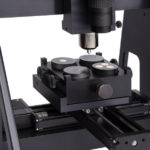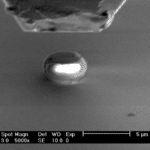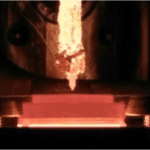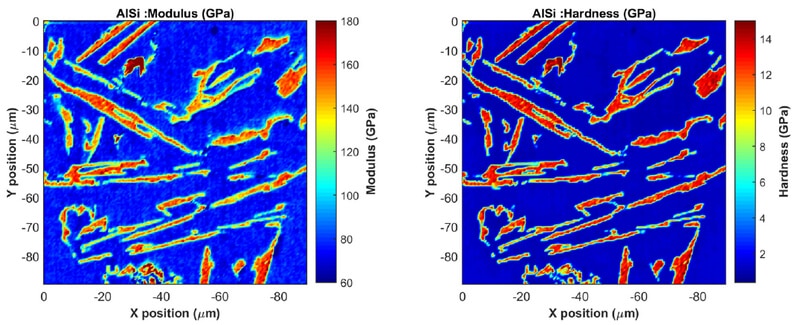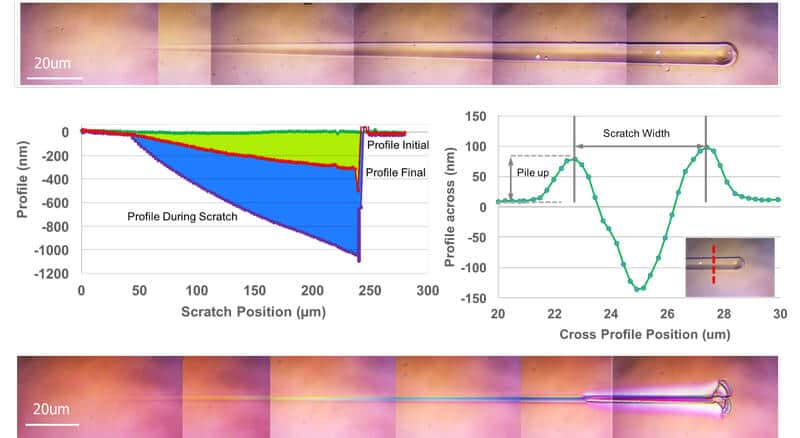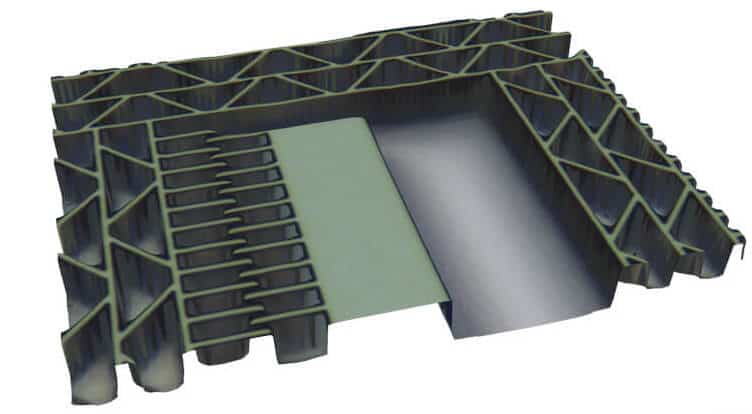Nanoindenter up to 1 N force
iMicro
1. Accurate, flexible and user-friendly
2. Wide range of nanomechanical tests
3. Hard materials, high loads, great depth
(> 1N of force)
The iMicro Nanoindenter is a precise, flexible and user-friendly instrument that allows a wide range of nanomechanical tests, including module and hardness (Oliver and Pharr, ISO 14577), storage and loss module and universal tests. The iMicro can exert up to 1 N of force to test hard materials, including at higher loads and at greater depths. An optional 50mN force actuator can be used to configure the iMicro to test flexible materials, and an optional 2D actuator can provide tribological measurements, lateral forces and other advanced research measurements requiring determination of the force / displacement along two axes.
Applications of nanoindentation
- Hardness and modulus measurements (Oliver-Pharr)
- High-speed hardware property cards
- ISO 14577 hardness test
- Delta polymer, storage and loss module
- Quantitative scratch and wear tests
- High temperature nanoindentation test
- Industries
- Hard coatings
- Semiconductor wafers
- Ceramics and Glasses
- metals and alloys
- Batteries and energy storage
- Research and development
- Pharmaceutical, food and personal care
- Automotive and aerospace
- Universal nanoscale trials
- Hard coatings
More info on applications
- Adhesion
- Hardness
- Young module
- Scratch
Nanoindentation with force up to 1N
The iMicro is equipped with the InForce 1000 actuator allowing to carry out universal nanoindentation and nanomechanical tests. It is also possible to add the InForce 50 actuator to test softer materials. The InView software is a flexible and modern software package that facilitates nanoscale testing. The iMicro is a compact platform with a high-speed InQuest controller and a vibration isolation gantry built into the housing. A wide range of materials and devices can be tested, including metals, ceramics, composites, thin films, coatings, polymers, biomaterials and gels.
ADVANTAGES
- Accurate, flexible and user-friendly
- Wide range of nanomechanical tests
- Hard materials, high loads, great depth (> 1N of force)
- InForce 1000 actuator for capacitive displacement measurement and electromagnetic force actuation with interchangeable tips
- The optional InForce 50 actuator provides a maximum normal force of 50 mN for the measurement of flexible materials and an optional Gemini 2D force sensor for dynamic two-axis measurement. Unique tip calibration system built into the software for fast and accurate tip calibration
- InQuest high speed controller electronics with 100 kHz data acquisition rate and 20 µs time constant
- XY motion system with easy-mount magnetic sample holder
- High rigidity frame with integrated anti-vibration isolation
- Integrated microscope with digital zoom for precise targeting of the indentation
- ISO 14577 and standard test methods
- InView software package with RunTest, ReviewData, InFocus reports, InView University online training and InView mobile app

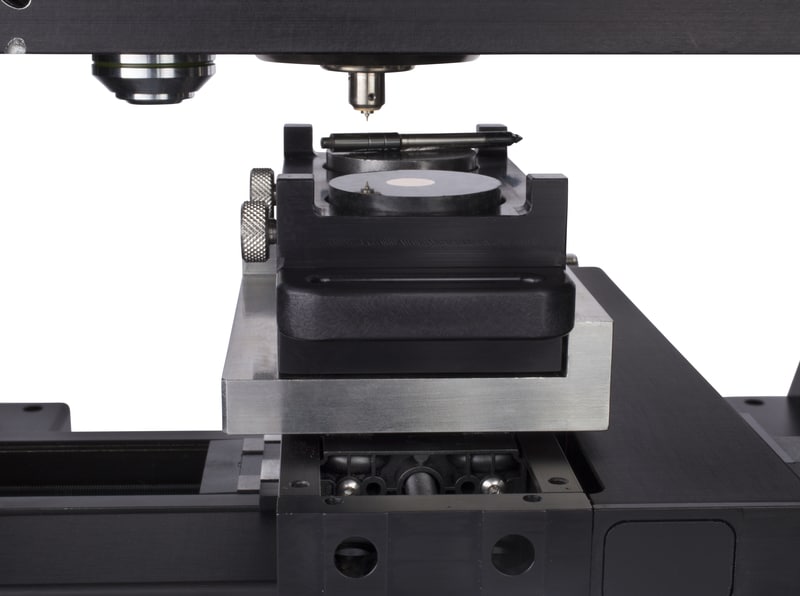
Options











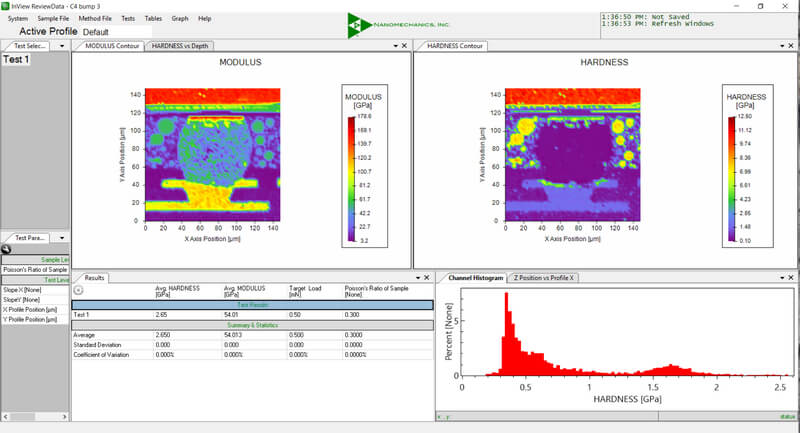
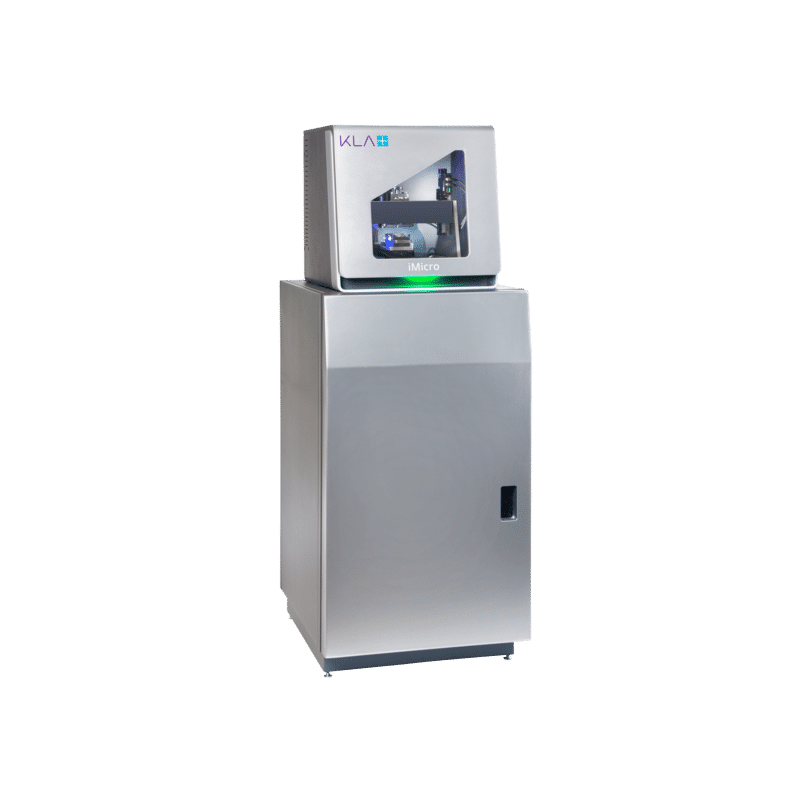



Continuous stiffness measurement (CSM)
Continuous stiffness measurement is used to quantify the dynamic properties of the material, such as the rate of deformation and the effects induced by frequency. The CSM technique involves oscillation of the probe during indentation to measure properties as a function of depth, force, time or frequency. The option comes with a constant stress rate experience that measures hardness and modulus as a function of depth or load, the most common test method used in universities and industry. CSM is also used for other advanced measurement options, including the ProbeDMA ™ method for storage and loss module measurements and AccuFilm ™ measurements independent of the substrate. The CSM is integrated with the InQuest controller and InView software to provide ease of use and data quality.
InForce 50 actuator
The InForce 50 actuator performs nanomechanical tests with forces up to 50 mN. The patented application of electromagnetic force guarantees robust measurements as well as long-term stability of force and displacement. State-of-the-art mechanical design ensures that harmonic movement is constrained to a degree of freedom, so that force and displacement are controlled along a single axis. The InForce 50 actuator is compatible with the CSM, NanoBlitz, ProbeDMA, biomaterials, sample heating, scratches, wear and ISO 14577 test options. The tips are interchangeable between the full range of InForce actuators and Gemini.
Gemini two-axis actuator
Gemini's two-axis technology brings standard indentation performance to a second lateral axis, with the CSM operating simultaneously on both axes. The additional information provided by this patented technique allows a better understanding of the properties of materials and the failure mechanisms. The two-dimensional transducer is necessary for lateral force and tribology measurements and is used to measure the Poisson's ratio, the friction coefficient, scratches, wear, shear and topology.
The sample heating option at 300 ° C allows the sample to be placed in a chamber for uniform heating while undergoing simultaneous testing with the InForce 1000 or InForce 50 actuators. The option includes a high temperature control precision, filling with inert gas to reduce oxidation and cooling to eliminate waste heat. ProbeDMA, AccuFilm, NanoBlitz and CSM are all compatible with the sample heating option.
NanoBlitz 3D
NanoBlitz 3D uses the InForce 50 or InForce 1000 actuator and a Berkovich tip to generate 3D maps of nanomechanical properties for high E factor materials (> 3GPa). NanoBlitz performs up to 100,000 withdrawals (300x300 matrix) at <1 second per withdrawal and provides Young's modulus (E), hardness (H) and stiffness (S) values at a specified load for each withdrawal from the network . The large number of tests allows increased statistical precision. The histogram graphs show several phases or materials. The NanoBlitz 3D package includes visualization and data processing functionalities.
NanoBlitz 4D
NanoBlitz 4D uses the InForce 50 or InForce 1000 actuator and a Berkovich tip to generate 4D maps of the nanomechanical properties of low W / O and high E materials (> 3GPa). NanoBlitz performs up to 10,000 withdrawals (30x30 matrix) every 5 to 10 seconds and provides Young's modulus (E), hardness (H) and stiffness (S) values as a function of the depth of each withdrawal in the matrix. NanoBlitz 4D uses a constant strain rate method. The package includes visualization and data processing functionalities.
AccuFilm is an InView test method based on the Hay-Crawford model to measure the properties of materials independent of the substrate using continuous stiffness measurement (CSM). AccuFilm corrects the influence of the substrate on the film measurements for hard films on soft substrates, as well as for soft films on hard substrates.
Biomaterials Method Pack
The Biomaterials Method Pack offers the possibility of measuring the complex module of biomaterials with shear modules of the order of 1 kPa, and uses continuous stiffness measurement (CSM). The pack includes a flat tip and a test method to assess the viscoelastic properties. This measurement technique is essential for characterizing small-scale biomaterials that are not well served by traditional rheometric instruments.
Survey Scanning
The Biomaterials Method Pack offers the possibility of measuring the complex module of biomaterials with shear modules of the order of 1 kPa, and uses continuous stiffness measurement (CSM). The pack includes a flat tip and a test method to assess the viscoelastic properties. This measurement technique is essential for characterizing small-scale biomaterials that are not well served by traditional rheometric instruments.
Scratch and wear test method
The scratch test involves applying a constant or ramped load to an indenter while crossing the surface of the sample at a specified speed. Scratch tests make it possible to characterize many materials such as thin films, fragile ceramics and polymers.
DataBurst
DataBurst allows systems with InView software and the InQuest controller to record displacement data at speeds> 1 kHz for the measurement of strain loads, jumps and other high-speed events. IMicro systems with the user method development option can also modify the methods for working with DataBurst.
Development of user methods for InView control software
InView is a powerful and intuitive platform for experiential scripting that can be used to design new or complex experiments. Experienced users can configure and perform virtually any small-scale mechanical test using the iMicro system equipped with the exclusive InView option.
True Test I-V Electrical measurements
Controlled via InView software, the True Test I-V option for the iMicro nanoindentor uses a precision ammeter and a voltage source, an electrical path crossing the tip and a conductive tip. This design allows the user to apply specific voltages to a sample and measure the tip current while simultaneously actuating the InForce 50 or InForce 1000 actuator.
Linear optical encoders
The iMicro's linear optical encoder (LOE) option is integrated into the X and Y motion steps and increases positioning accuracy and the throughput of the test process.
Indentation tips and calibration samples
The InForce 50, InForce 1000 and Gemini actuators use interchangeable tips. A wide variety of vivid penetrations are available, such as Berkovich, cube corner and Vickers, as well as flat punches, sphere punches and other geometries. Standard reference materials and calibration standards are also available for the entire product range.
Contact us for more information on this product
Would you like an estimation ?
Additional information?
We will reply to you within 24 hours





